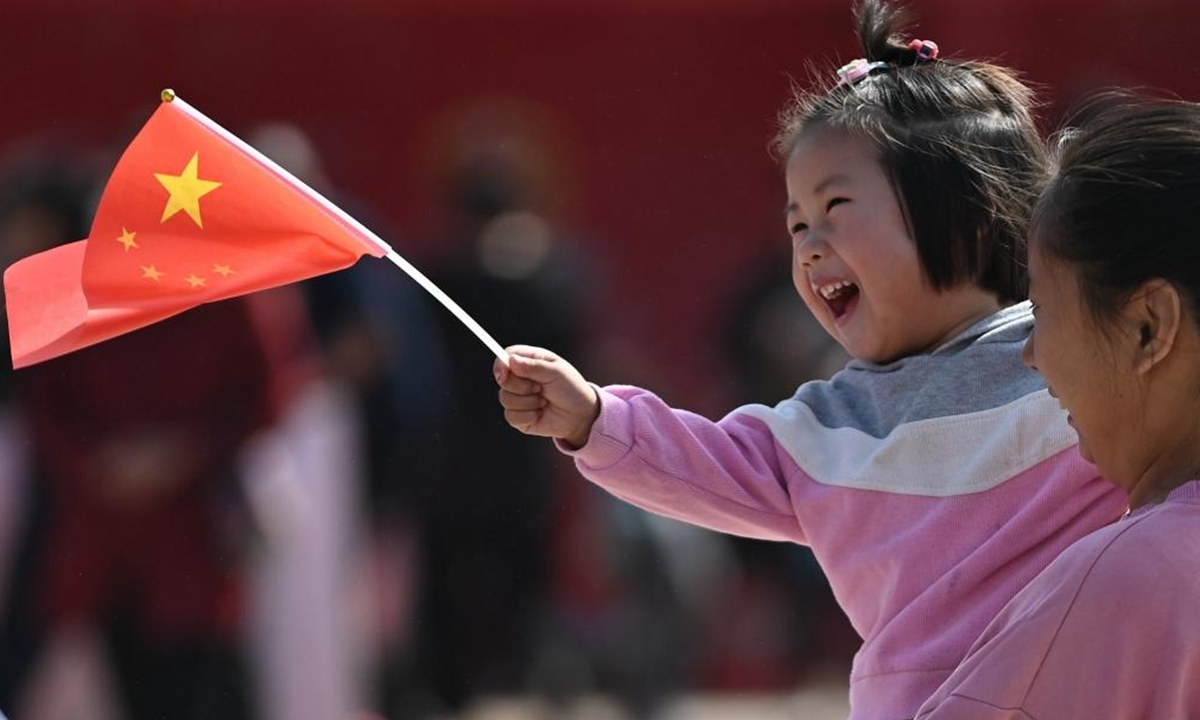
A child holding a Chinese national flag enjoys herself at a wetland park in Xigang Town, Tengzhou City of east China's Shandong Province, Oct. 1, 2024. (Photo by Li Zhijun/Xinhua)
Over the past 75 years since the founding of the People's Republic of China (PRC), the status of women and children in China has undergone tremendous changes, and their health has significantly improved, Xinhua News Agency reported on Friday, citing data from the National Bureau of Statistics.
The report, part of a series highlighting the country's socioeconomic development since the founding of the PRC, said that the strengthening of maternal and child healthcare system has contributed to the improvement of health among Chinese women and children.
Since 1950, China has gradually established a maternal and child healthcare system unique to the country, centered around maternal and child health institutions in local areas, and supported by primary healthcare facilities, and specialized departments in large general hospitals and research institutions.
Since the 18th National Congress of the Communist Party of China, the maternal and child healthcare network has become an integral part of China's medical security system, serving 1.4 billion people and connected to a three-tier healthcare system that covers both urban and rural areas.
The number of maternal and child health institutions in China grew from 426 in 1950 to 3,031 in 2022. The number of children's hospitals rose from 25 in 1983 to 151 in 2022. And thanks to these achievements, China has been recognized by the World Health Organization as one of the 10 high-performing countries in maternal and child health.
Over the past 75 years, China has also witnessed steady development in the capacity for maternal and child healthcare services. In 2023, the prenatal care coverage, hospital delivery rate, and postpartum home visit rate were 98.2 percent, 99.95 percent and 97 percent, respectively, marking significant improvements from 1996. The management of newborns and children has also shown dramatic improvement over the years.
As a result of China's ongoing efforts, by 2020, the average life expectancy of women in China has reached 80.88 years, an increase of 11.61 years compared to1981. The maternal mortality rates have steadily decreased, with the gap between urban and rural areas narrowing. The maternal mortality rate dropped from 88.8 per 100,000 in 1990 to 15.1 per 100,000 in 2023. The disparity between urban and rural maternal mortality rates fell from 1:2.2 in 1990 to 1:1.4 in 2023. The neonatal, infant, and under-five mortality rates have all declined significantly.
Global Times




